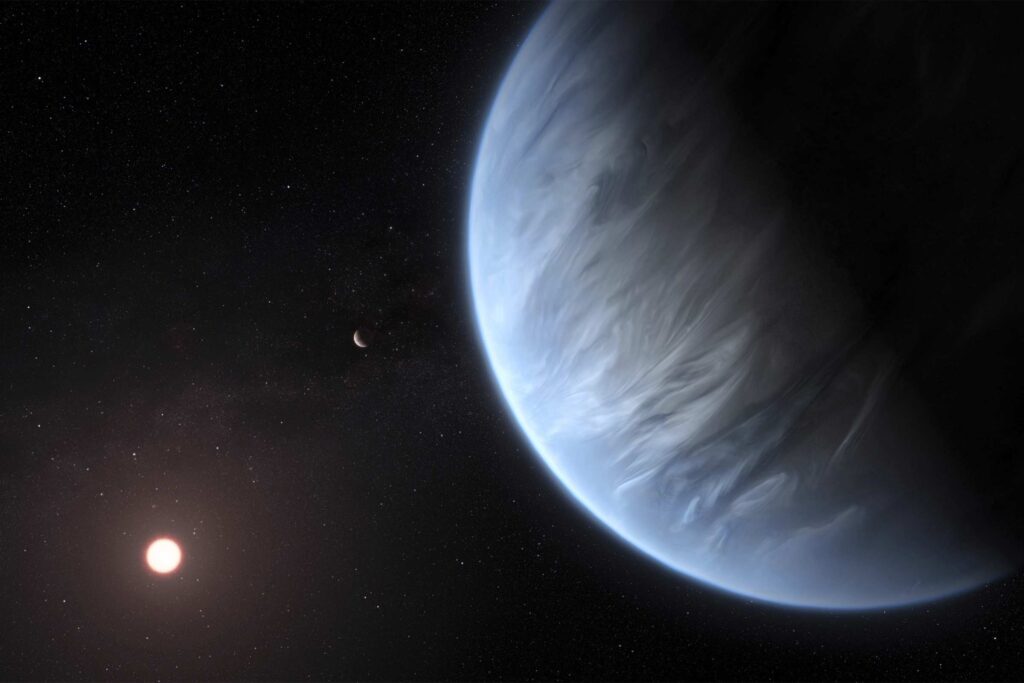Some time ago, relying on some opinions of reputable people in the astronomy and astrology community, rumored The James Webb Space Telescope has found a planet with strong evidence of alien life. This emotional point of view was published with the title “Have we really found the aliens?” It attracted public attention in the British news magazine “Spectator”.
According to Betterij’s rule in headlines, the rule that states that the answer to question headlines is negative, the answer to the headline of the Spectator article should also say no. But how strong is this good? The answer to this question is more difficult.
In preparing its article, Spectator has used the opinions of some reputable British scientists, including Rebecca Smethurst, an astrophysicist at Oxford University. “I think very soon we’ll have a paper that provides strong evidence for a biosphere on an exoplanet,” Smethurst says.
In addition, British astronaut Tim Peake has fueled the rumor by making new statements. He believes that “the James Webb telescope is potentially already possible [حیات بیگانه] has found The only problem is that scientists don’t want to publish or confirm these results until they are absolutely sure; “But we have found a planet that appears to be sending strong signals of biological life.”
For answers, Eric Berger, space editor at AresTechnica, went directly to NASA officials in charge of the James Webb Telescope and asked if they had found life, or at least strong evidence of life, on another planet around a star other than our own Sun. No. The answer to this question was also negative; But not a solid negative.
“James Webb has not found definitive evidence of life on an exoplanet,” said Nicole Colon, the telescope’s deputy project scientist for exoplanet science. It is expected that the observations of this telescope can lead to the initial identification of potential biological signs that can make the habitability of the planet in question more or less probable. “Future missions will be needed to definitively determine the habitability of an exoplanet.”
Although Colon did not name a specific planet in his remarks, Berger is confident that he meant K2-18 b. This alien world with a mass of 8.6 times that of Earth is 120 light years away from our solar system. Astronomers believe that this extrasolar planet is a world of the “Hisin” type; This means that it has blue oceans on its surface and an atmosphere rich in hydrogen.
Astronomers have previously studied K2-18 b with the Hubble Space Telescope; But after the James Webb telescope made interesting observations of it, the scientific community’s interest in this planet increased. One of the molecules that James Webb found in K2-18 b was dimethyl sulfide.
But what exactly is dimethyl sulfide? It’s an organic compound that you’ve smelled if you’ve ever cooked cabbage. Dimethyl sulfide is released into Earth’s oceans by phytoplankton as part of their metabolic process. More precisely, this substance is only made by life on Earth. The discovery of dimethyl sulfide in K2-18 b doesn’t prove the existence of life, but it’s certainly an exciting clue if it’s actually there.
So, as far as we know, that’s the gist of the story. James Webb’s observations of the exoplanet K2-18 b have undoubtedly fascinated scientists. However, there are still heavy debates about the measurement of water, methane and dimethyl sulfide. The evidence is promising, but inconclusive. As Colon pointed out, we need more data and possibly more advanced new tools to make a definitive decision about the existence of alien life.



